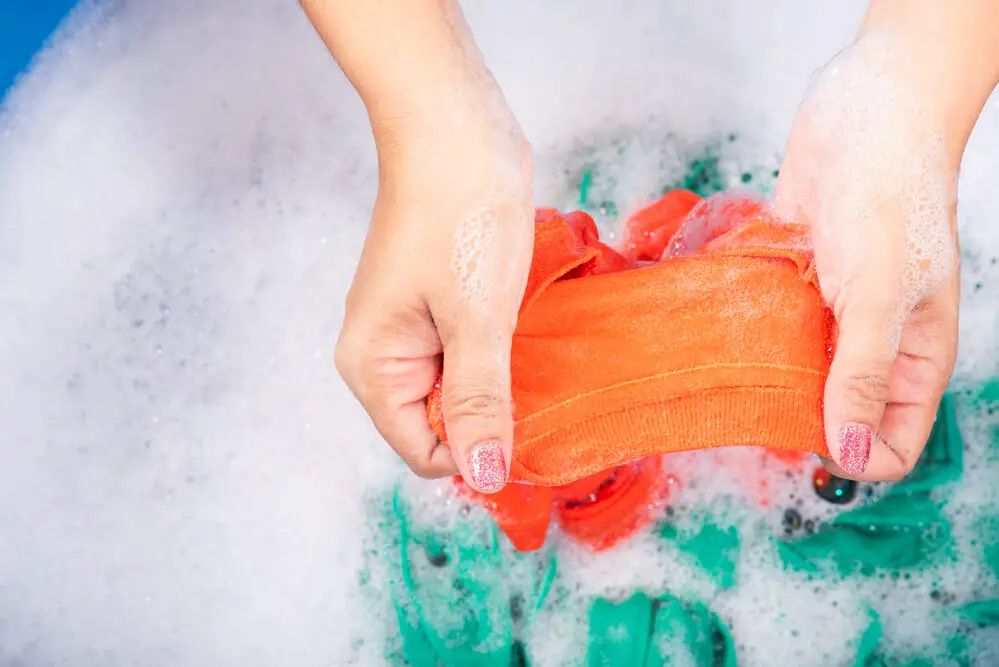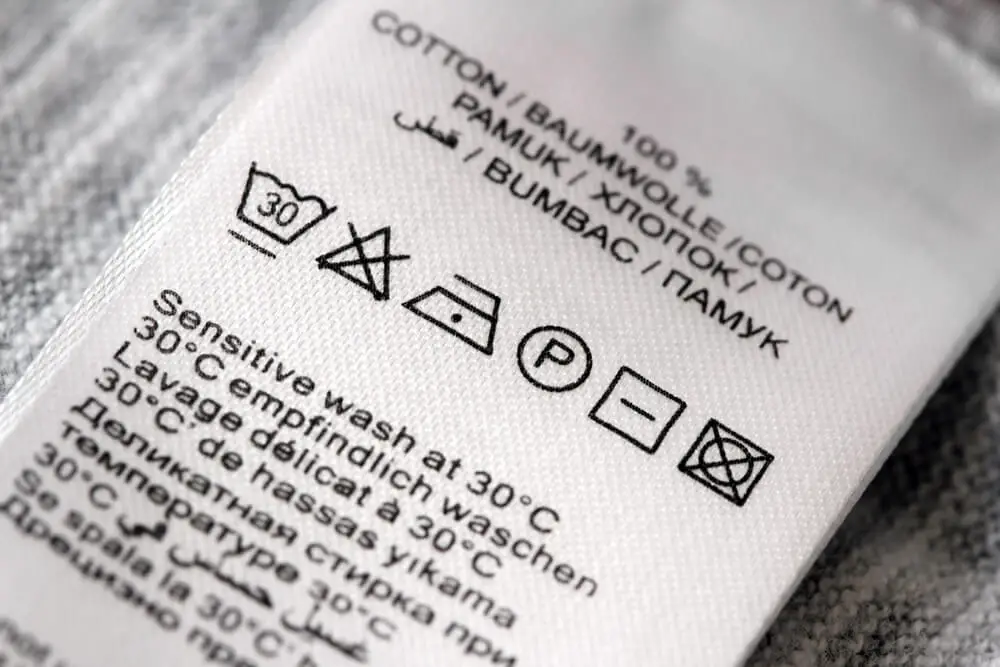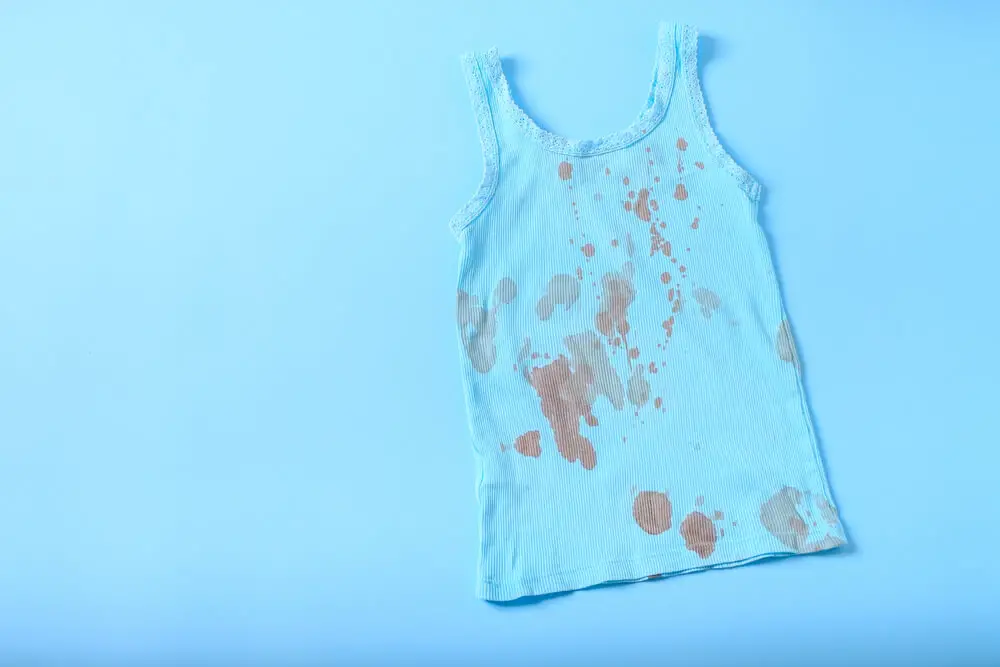We’ve all been there: a DIY painting project gone slightly awry, and you’re left with stubborn, oil-based paint stains on your clothes.
Don’t be too quick to toss them in the trash bin, though! Even the most unyielding paint stains can often be salvaged with a little know-how and patience.
This comprehensive step-by-step guide will navigate you through the process of identifying the stain, gathering the necessary supplies, and applying various removal techniques based on the stain’s characteristics.
We’ll also address safe laundering practices post-treatment, preventive measures to avoid future mishaps, and how to deal with different fabrics.
Get ready to turn that accidental splatter into a stain-removing success story!
Step 1: Identify the Stain: Distinguishing Oil-Based Paint

Identifying the type of stain is crucial to effectively dealing with it. Oil-based paints have a different composition compared to water-based paints, which affects how they can be removed.
These paints are much more durable, and, unfortunately, this also applies to the stains they can leave on your clothing. They may have a glossier appearance and a thicker texture than other types of paint.
Knowing how to distinguish oil-based paint can save a lot of effort and prevent you from causing more harm to your clothing.
The paint container is an excellent source of information. Look for keywords such as “oil-based” or “alkyd.”
Step 2: Gather Necessary Supplies for Removal
Before beginning the stain removal process, you need to gather all the necessary supplies. This could include dish soap, a commercial paint remover designed for oil-based paints, acetone, turpentine, vinegar, a clean cloth or sponge, and protective gloves.
Having these items on hand will allow you to address the stain systematically and effectively.
Step 3: Early Response: Blotting the Fresh Paint Stain
The sooner you can treat the paint stain, the better your chance of removing it. If the paint is still wet, use a clean cloth or sponge to blot – not rub – the area.
Be careful to avoid spreading the paint further into the fabric. The aim is to remove as much excess paint as possible, reducing the stain’s severity.
Step 4: Applying Dish Soap: A Simple Home Remedy

Using dish soap is a simple yet effective method to begin treating an oil-based paint stain. Apply a small amount of soap directly to the stain, then gently work it into the fabric using your fingers or a soft toothbrush.
Allow the dish soap to sit for about 10-15 minutes before rinsing with warm water. Repeat this process if necessary until the stain lightens.
Step 5: Introduction to Commercial Paint Removers
If dish soap doesn’t altogether remove the stain, you may need to use a commercial paint remover. These are formulated specifically for oil-based paint and can effectively remove stubborn stains.
Apply the paint remover according to the manufacturer’s instructions, which usually involve leaving the solution on the stain for a certain period of time before washing.
Step 6: Utilizing Acetone: Safety and Application Steps
Acetone, commonly found in nail polish remover, is another substance that can break down oil-based paint. Be sure to test it on an inconspicuous area of the garment first, as acetone can damage some fabrics.
Use a cloth or sponge to apply the acetone to the stained area, then blot gently. After the stain is removed, wash the garment as usual.
Step 7: Turpentine Application: Guidelines and Precautions

Turpentine is a traditional method for removing oil-based paint, but it’s also a strong solvent that should be used cautiously. Always use gloves and work in a well-ventilated area when using turpentine.
Like with acetone, apply the turpentine with a cloth or sponge, then blot the area. Rinse thoroughly after the stain is gone.
Step 8: Trying Natural Solutions: Vinegar and Its Uses
White vinegar can be a natural alternative for removing oil-based paint stains. It’s mild enough not to harm most fabrics but strong enough to help loosen the paint.
Apply vinegar to the stain, let it sit for a few minutes, then gently blot. As with all other methods, wash the garment normally after treatment.
Step 9: Assessing the Stain: When to Opt for Professional Services
If you’ve tried all the methods above and the stain still persists, it might be time to consider professional cleaning services. They have specialized equipment and chemicals that can handle stubborn stains.
Remember, the goal is to save your garment without causing further damage, so don’t hesitate to seek professional help when needed.
Step 10: Post-Treatment Laundering: Ensuring Safe Practices

After treating the stain, it’s essential to launder the garment correctly. Always check the care label for instructions. If the garment is machine washable, wash it as you normally would but separately from other clothes to avoid any paint residue from spreading.
If the care label indicates “dry clean only,” it’s best to take the garment to a professional cleaner.
Step 11: Preventing Future Stains: Care Tips and Techniques
The best way to deal with paint stains is to prevent them in the first place. If you’re working with oil-based paint, consider wearing old clothes that you wouldn’t mind getting stained, or use a painter’s smock or apron.
Also, always be careful when opening paint containers and when painting, as splatters can happen.
Step 12: Disposing of Used Cleaning Materials: Environmentally Friendly Methods
Proper disposal of the cleaning materials used in the process is not only environmentally friendly but also safe. Some of the substances used, such as turpentine and acetone, are considered hazardous waste and should be disposed of accordingly.
Local waste facilities often have designated drop-off points for such materials. Never pour these chemicals down the drain.
Step 13: Dealing with Different Fabrics: Tailoring Your Approach

The type of fabric can significantly affect how you should approach an oil-based paint stain. For example, delicate fabrics like silk may require a professional’s touch, while durable ones like denim can withstand stronger treatment methods.
Always check the garment’s care label, and when in doubt, test any cleaning solution on an inconspicuous area first.
Step 14: Handling Persistent Stains: Advanced Techniques and Tips
Persistent stains might need a more aggressive approach. However, this should be a last resort and only used for durable fabrics that can withstand harsher treatment.
Pre-soaking the garment, using a stronger commercial paint remover, or a combination of methods might be required. Remember, always follow the instructions and precautions of any product used.
Step 15: Review and Reflection: Avoiding Common Mistakes in Stain Removal

Learning how to remove oil-based paint stains from clothing effectively is a process. It’s essential to review and reflect on your approach to avoid common mistakes, such as rubbing the stain, which can spread the paint further, or using a harsh chemical without testing it first.
Having patience is key. It’s better to repeat a gentle treatment multiple times than to ruin a garment with a too-aggressive approach.
| Effectiveness | Good for small, fresh stains | Best for stubborn stains | Works well on most oil-based paints | Depending on the product, always follow instructions |
| Safety | Very safe | The traditional method is effective but strong | Test on inconspicuous areas first. May damage some fabrics | Use with caution, can be harmful if not used correctly |
| Availability | Commonly available | Commonly available in hardware stores | Available in most drugstores | Available in hardware stores |
| Environmental Impact | Eco-friendly | Depending on the product, always follow instructions | Hazardous, follow disposal instructions | Hazardous, follow disposal instructions |
In a nutshell,
Dealing with oil-based paint stains on your clothing doesn’t have to be a daunting task.
You can effectively remove these stubborn stains with the correct information and tools. Whether it’s quick blotting with a clean cloth, a dab of dish soap, or even a commercial paint remover, there’s a solution for you.
Remember, time is of the essence when treating these stains. Act quickly for the best results.
But even if the paint has dried, don’t give up! There are still options available, from natural vinegar treatments to stronger solvents like acetone or turpentine.
However, don’t forget about the importance of safety. Always use these products in a well-ventilated area and follow disposal instructions carefully.
Different fabrics require different care, so always check the garment’s label and test any product on a small, hidden area first.
If the stain proves too challenging, professional cleaning services are there to help. Lastly, remember that preventing paint stains is more accessible than removing them.
Take precautions when painting; always wear clothes you wouldn’t mind staining. Following these steps can save your favorite garments from being ruined by oil-based paint stains.


















